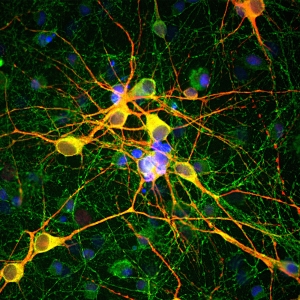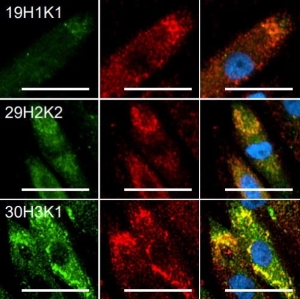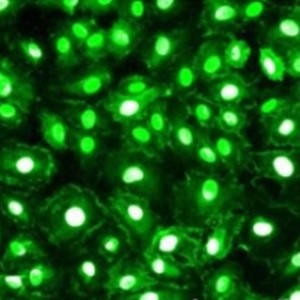Product Details
Catalog Number: RA18011
Applications: WB, IHC, IF
Type: Rabbit IgG
Immunogen: Phosphopeptide corresponding to residues around serine 890 of human NMDAR1
Storage: Do not aliquot. Store at -20°C. Avoid freeze-thaw cycles.
Shipping: Frozen (Polar Packs)
Format A: Affinity Purified
Format B: liquid
Species Reactivity: Human, Mouse, Rat
Entrez: 2902
UniProt: Q05586
Downloads: Datasheet (pdf)
Product Sizes
| Size | List Price | Price | Cart |
|---|---|---|---|
| 100 ul | $510.00 | Add to Cart |
N-methyl-D-aspartate receptor (NMDAR) forms a heterodimer of at least one NR1 and one NR2A-D subunit. Multiple receptor isoforms with distinct brain distributions and functional properties arise by selective splicing of the NR1 transcripts and differential expression of the NR2 subunits. NR1 subunits bind the co-agonist glycine and NR2 subunits bind the neurotransmitter glutamate. Activation of the NMDA receptor or opening of the ion channel allows flow of Na+ and Ca2+ ions into the cell, and K+ out of the cell (1). Each subunit has a cytoplasmic domain that can be directly modified by the protein kinase/phosphatase (2). PKC can phosphorylate the NR1 subunit (NMDAR1) of the receptor on Ser890/Ser896, and PKA can phosphorylate NR1 on Ser897 (3). The phosphorylation of NR1 by PKC decreases its affinity for calmodulin, thus preventing the inhibitory effect of calmodulin on NMDAR (4). The phosphorylation of NR1 by PKA probably counteracts the inhibitory effect of calcineurin on the receptor (5). NMDAR mediates long-term potentiation and slow postsynaptic excitation, which play central roles in learning, neurodevelopment and neuroplasticity (6). References Liu, X.B. et al. (2004) J. Neurosci. 24, 8885-8895. Westphal, R.S. et al. (1999) Science 285, 93-96. Tingley, W.G. et al. (1997) J. Biol. Chem. 272, 5157-5166. Hisatsune, C. et al. (1997) J. Biol. Chem. 272, 20805-20810. Raman, I.M. et al. (1996) Neuron 16, 415-421. Makhinson, M. et al. (1999) J. Neurosci. 19, 2500-2510. |
Images
Confocal microscopic image of mouse retina labeled with Phospho-NMDAR1 (Ser890) Antibody (red) and CREB Mouse mAb (green). Blue pseudeocolor stain = DRAQ5® (fluorescent DNA dye).






